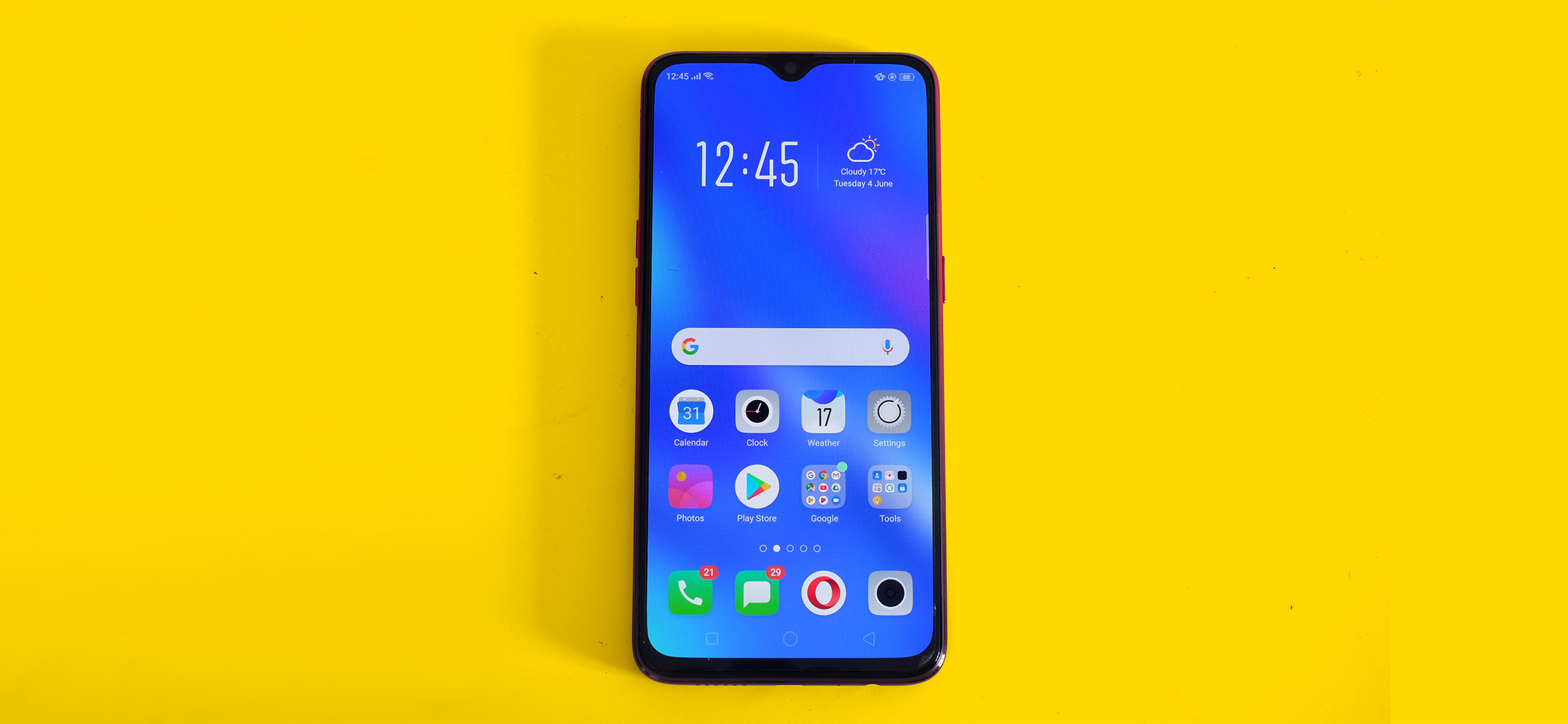Why you can trust TechRadar
Software
- Android 8.1
- ColorOS 5.2
The Oppo RX17 Neo runs Android 8.1 and Oppo’s ColorOS software. This is faulty on two fronts.
Android 8.1 is old and ColorOS is one of the weaker custom Android interfaces. It has some strange ideas.
Opera is installed as the browser of choice. And there’s no app drawer. You only have home screens and, unlike Huawei’s often-criticized EMUI, you can’t add an app drawer.
We had taken an extended break from ColorOS before using the Oppo RX17 Neo. Returning to it took a couple of days of slightly uncomfortable transition. But no interface is that bad in 2019. A couple of weeks on, it feels completely normal.
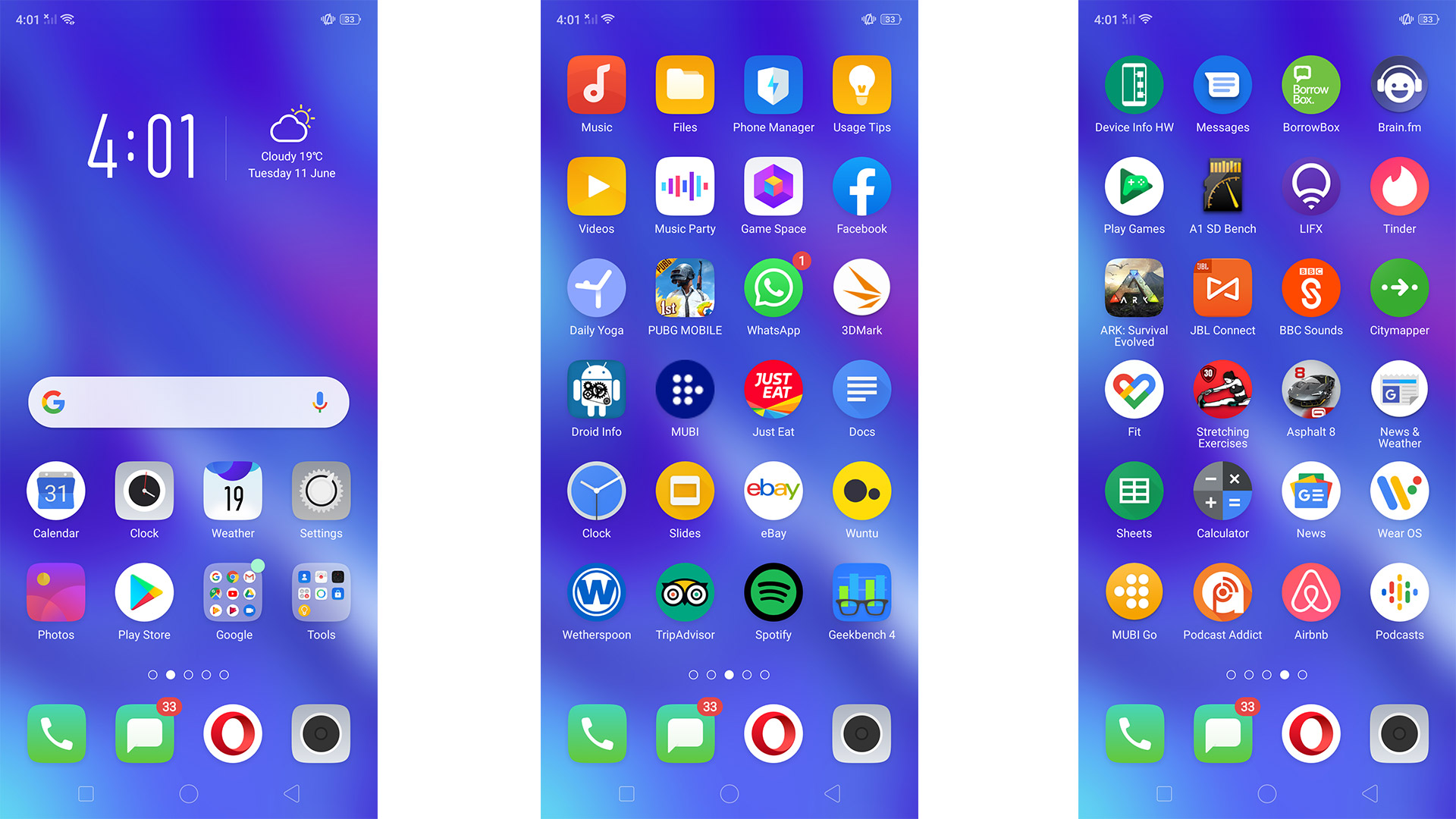
It has a few extra features too. Dig around in the settings and you can make the RX17 Neo power button double as a Google Assistant shortcut.
ColorOS lets you clone certain apps like WhatsApp and Facebook, so you can run them with two accounts concurrently. And there are gestures for split-screen multi-tasking some will appreciate (probably about five people in total).
We have noticed a few more bugs than normal in the Oppo RX17 Neo though. On occasion apps have insta-closed on loading, and sometimes WhatsApp messages are strangely slow to load when returning to the app. However general performance is very good.
The main points to take away here are the use of an old version of Android that lacks today’s trendy use-monitoring tools, and a slightly contentious UI. You can’t fix the first, but custom launcher apps can help with the UI.
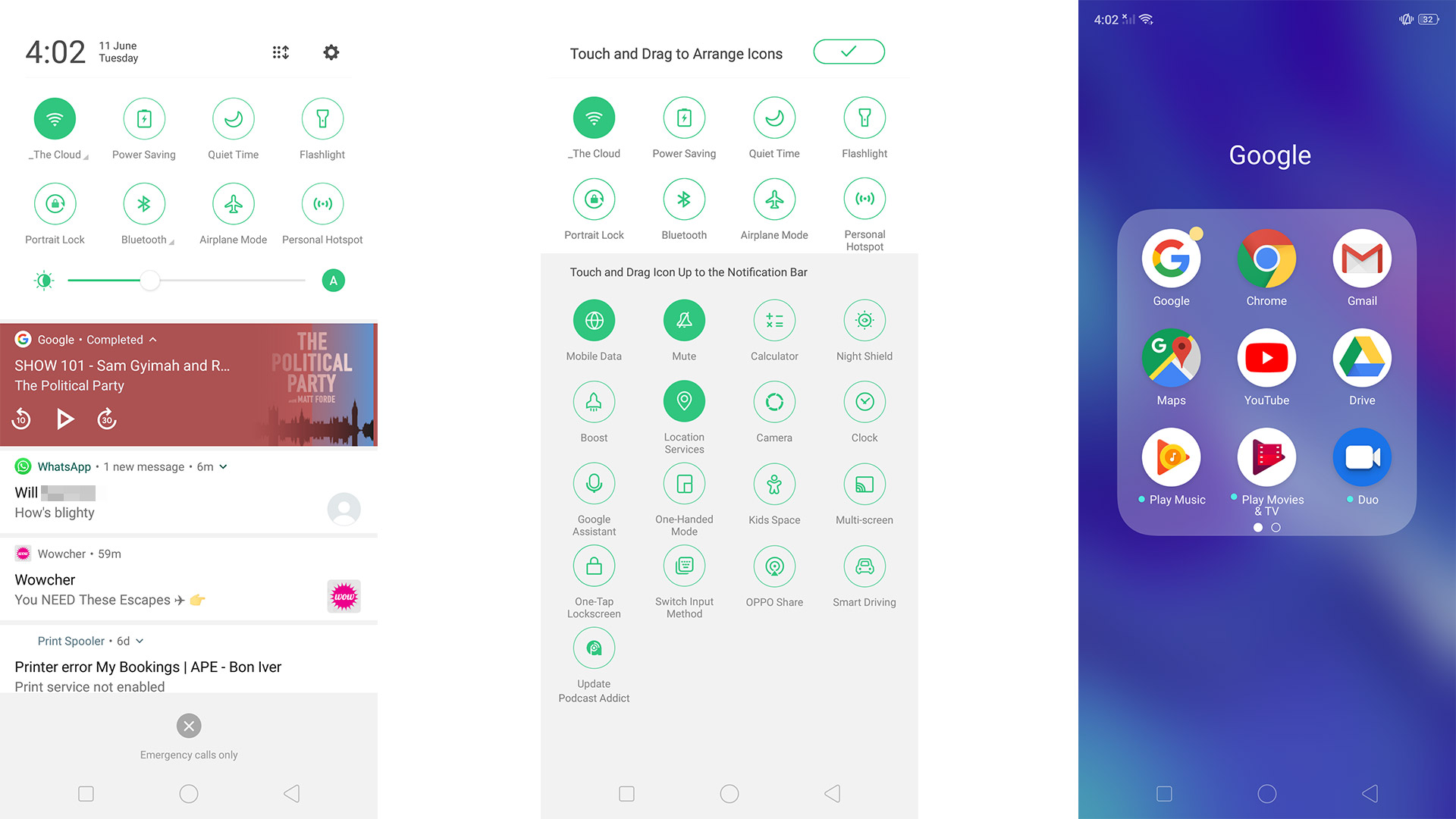
Movies and games
- Better-than-average gaming performance
- 128GB of storage
The Oppo RX17 Neo is one of the better phones at the price for raw gaming performance. Its Snapdragon 660 chipset has an Adreno 512 graphics chip. It is faster than the Moto G7 Plus’s Adreno 509 and the Honor 20 Lite’s quad-core Mali G51.
It lets you play PUBG at Medium rather than Low settings and handles Ark: Survival Evolved with the visuals pushed up a little better than most.
Of course, you can also buy Xiaomi’s Pocophone F1 at a similar price. It has the 2018 flagship Snapdragon 845 chipset, making it more powerful still, by a large margin.
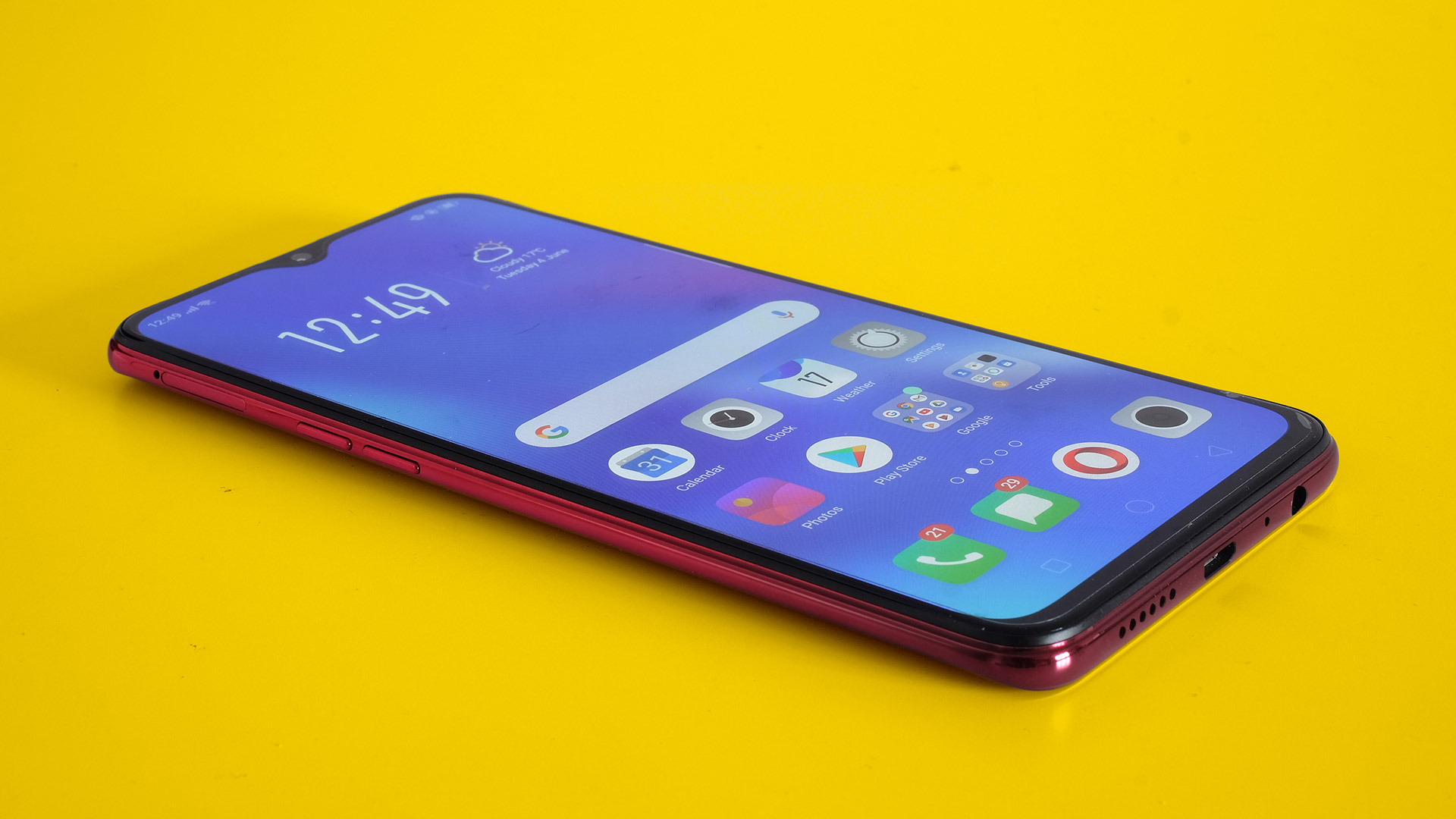
Other aspects of the Oppo RX17 Neo are strong too. Its punchy OLED screen makes movies and games look great. And the 128GB of storage offers masses of room for installs and locally stored video.
It also has game optimizer software, which is part of the ColorOS interface. Several manufacturers offer their own take on this. Oppo’s is called Game Space. It restricts the background data use of other apps, claims to boost performance, blocks notifications, frees up RAM and can lock the brightness level.
Game Space doesn’t let you stream your gameplay, though, so is among the simpler of these game optimizer features.
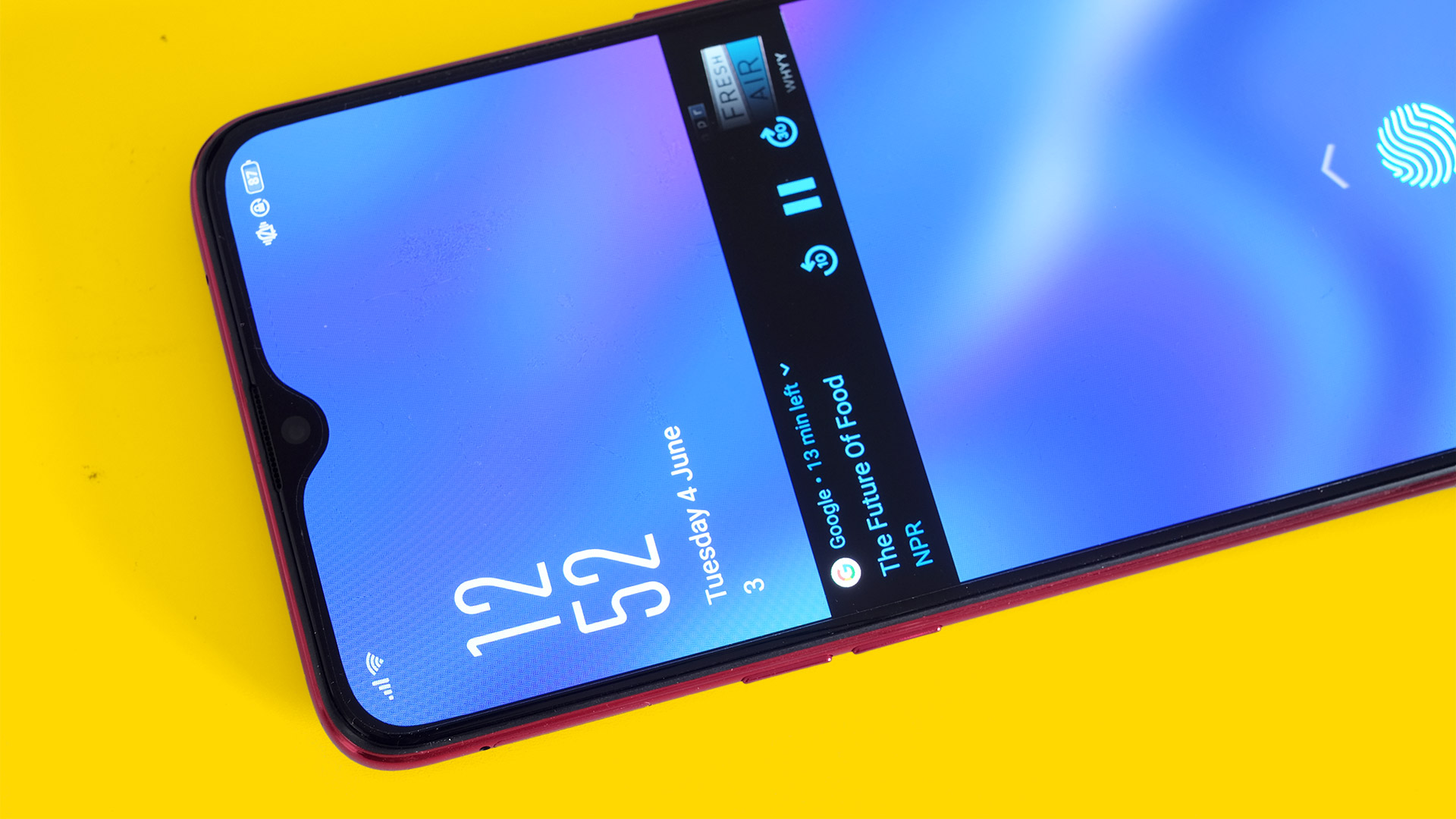
The teardrop notch is the only other concern. Like any notch, it eats into the screen a little, but is a fairly trim, smoothly contoured cut-out, and not particularly distracting. It’s one of the more sophisticated-looking designs around, and you don’t get a notch-killing motorized camera at this price just yet.
And the speaker? The Oppo RX17 Neo has a single speaker on its bottom. It’s quite loud, but not very bassy, matching the other better performers in this class.
Performance
- Octa-core Snapdragon 660 CPU
- 4GB of RAM
- Adreno 512 GPU
The Oppo RX17 Neo’s benchmarks lie right where they should. Its Snapdragon 660 chipset is more powerful than the Huawei, Honor and Motorola phones available at the same price. But it’s still clearly a mid-range phone.
It scores 5,491 points in Geekbench 4, a typical result for a Snapdragon 660.
This chipset has eight cores. All are Kryo 260 cores, but four are clocked at 2GHz, the other four at 1.8GHz. The step-down Snapdragon 636 chipset uses eight at 1.8GHz, giving the Oppo RX17 Neo a slight boost in raw CPU power over some rivals, like the Moto G7 Plus.
The Oppo RX17 Neo also has 4GB of RAM, which is now the standard in this class.
Current page: Anything else I should know?
Prev Page Battery life and camera Next Page Verdict and competitionAndrew is a freelance journalist and has been writing and editing for some of the UK's top tech and lifestyle publications including TrustedReviews, Stuff, T3, TechRadar, Lifehacker and others.
